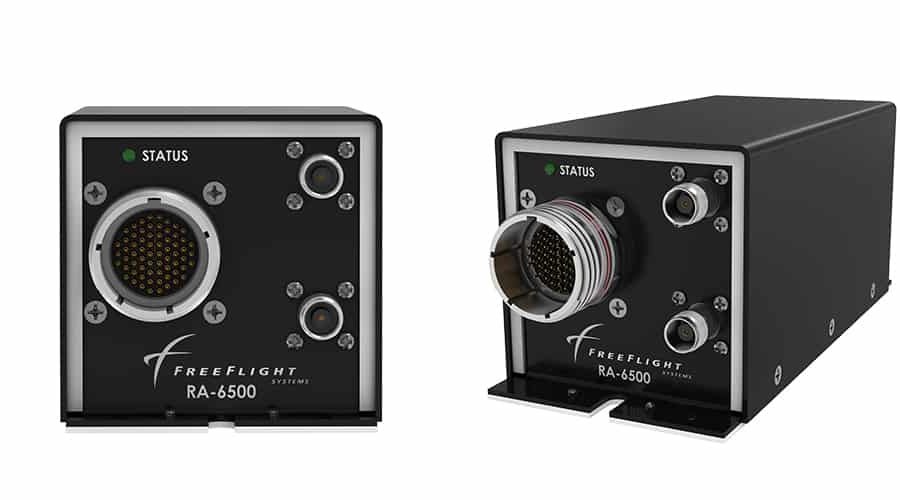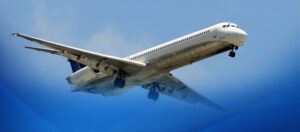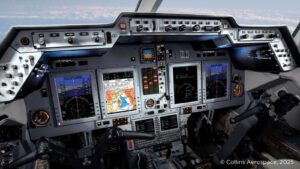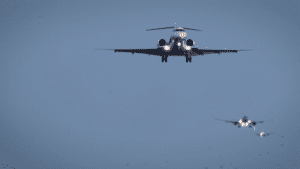NEW ORLEANS, LA, MARCH 29, 2022 – FreeFlight Systems, a NextGen aviation leader specializing in avionics design, development, and manufacturing, today announced that Lighter Than Air Research (“LTA Research”), an aerospace research and development company building experimental and certified manned and remotely piloted airships, has selected FreeFlight Systems’ flagship RA-6500 radar altimeter for a dual install solution.
LTA Research’s next-generation airships will be used for cargo transport in remote areas while maintaining a small environmental footprint.
Committed to implementing advanced and innovative technologies, LTA Research will be utilizing one of FreeFlight Systems’ recently launched TERRAIN Series radar altimeters, the RA-6500. With the first major upgrade to RF circuitry design in decades, Digital Signal Processing (DSP) technology, and exceptional test performance mitigating C-Band 5G interference, the RA-6500 radar altimeter is a powerful and high-reliability device that will equip LTA Research with a 5G-tolerant solution, ensuring advanced situational awareness and safety.
“We made the conscious decision to utilize leading, future-proof components and avionics for our platform,” mentions Alan Weston, Chief Executive Officer at LTA Research. “For that, we require state-of-the-art, robust, and reliable avionics, such as FreeFlight Systems’ RA-6500 TERRAIN Series onboard our airships to ensure safe operations.”
Supporting dual install capabilities, the RA-6500 delivers the redundancy and accuracy required for mission-critical environments. Designed for all segments of aviation including commercial transport, business and general aviation, military and defense, rotorcraft and unmanned aviation, the RA-6500 is the lightest, most advanced radar altimeter in its class and has been specifically designed to coexist with 5G mobile networks.
“It is exciting to see our 5G-tolerant radar altimetry solution extend beyond traditional rotorcraft and fixed-wing applications. We pride ourselves on providing innovative designs which are scalable and adaptable to new applications. This is a great example of that,” mentions Anthony Rios, President of FreeFlight Systems. “We look forward to supporting LTA Research’s advanced technology and missions.”
The TERRAIN Series’ Design Assurance Level (DAL) B criticality, dual-install compatibility, altitude measurement range of up to 2,500 feet, and 55,000 ft service ceiling comes in a small footprint design that can easily be installed in place of legacy altimeters from various manufacturers.
Further, to support a wide range of aircraft platforms across heavy rotorcraft, regional air transport, turboprops, business aviation, and military segments, the TERRAIN Series incorporates the latest ethernet connectivity standards for new platforms while retaining an analog ARINC 552 interface for integration with legacy indicators and components. For additional display options, FreeFlight Systems offers the RAD45 standalone indicator which meets EASA AMC1 SPA.NVIS.110(b) guidelines.
FreeFlight Systems is now fielding orders for the new TERRAIN Series radar altimeters. To order or learn more, please visit FreeFlight Systems at Booth 423 during AEA’s International Convention from March 28 to 31, contact sales@freeflightsystems.com, or visit freeflightsystems.com.
About FreeFlight Systems
As NextGen aviation leader, FreeFlight Systems designs and manufactures high-performance avionics for flight safety. These solutions deliver substantial safety and unmatched reliability that is critical for modern flight operations. Founded in 2001 and based in Texas, the company pioneered the first certified aviation WAAS/GSP receiver and their first rule-compliant UAT ADS-B system. FreeFlight Systems is now a global aerospace leader, specializing in SBAS/GNSS sensors, radar altimeters, flight management systems and other NextGen aerospace avionics. For more information, visit freeflightsystems.com.
About LTA Research
Lighter Than Air (LTA) Research is an aerospace research and development company building experimental and certified manned and remotely piloted airships. We are developing advanced technologies to dramatically increase the capabilities and lower the cost of 21st-century airships. With these next-generation airships, we strive to improve humanitarian aid delivery and reduce carbon emissions, while providing economic opportunity and new jobs to Americans. LTA airships will have the ability to complement — and even speed up — humanitarian disaster response and relief efforts, especially in remote areas that cannot be easily accessed by plane and boat due to limited or destroyed infrastructure. We ultimately aim to create a family of aircraft with zero emissions that, when used for shipping goods and moving people, would substantially reduce the global carbon footprint of aviation.






